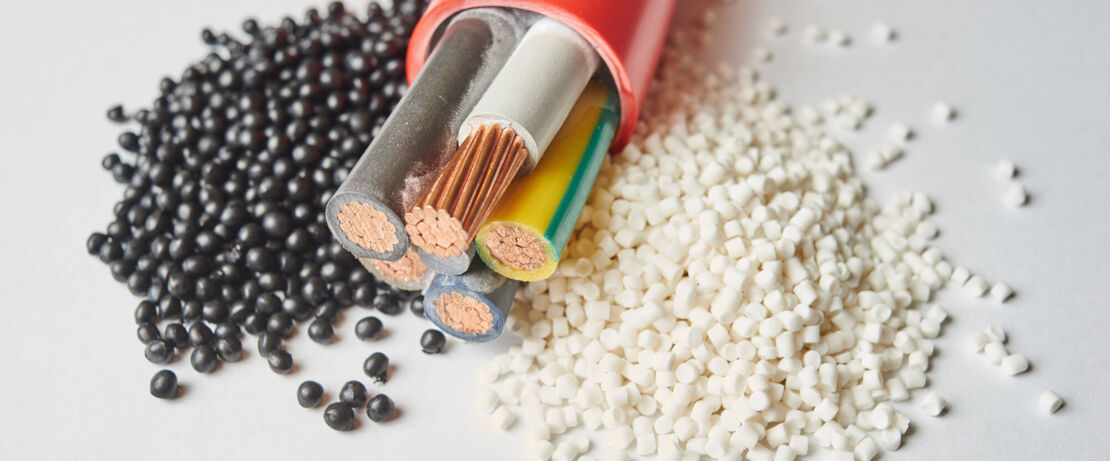
Filled Plastic Compounds
Dynasylan® silanes create bonds
Mineral filling material is incorporated into most plastics today. But inorganic fillers and organic polymers are not readily compatible. Dynasylan® silanes create the bond between the two, while also significantly reducing water absorption of the plastic.
Filled plastics have a host of benefits. For example, they improve the products’ mechanical or functional properties. In case of fire, inorganic flame retardants reduce flammability and restrict smoke formation in cables, pipes and other plastic materials.
But for this to work correctly, the inorganic filler and the plastic must be compatible with one another and exhibit excellent adhesion. After all, the better the individual components of a structure bond to each other, the more solid the structure. This also makes the structure more flexible and more resistant to external influences.
Linking the organic and inorganic worlds
Their different molecular structures mean that inorganic filling materials such as glass fibers, quartz, aluminum trihydroxide and iron oxides are not readily compatible with organic polymers. That is where silanes come in: They link the inorganic and organic worlds together at the molecular level. It is all made possible by the silanes’ structure, which contains both an organofunctional and a silicon-functional group. This allows organic and inorganic substances to be processed together more easily, for optimum homogenization.
Under its Dynasylan® brand, Evonik offers a wide range of silanes for almost every type of polymer. Special silane oligomers are tailored to the various polymers used in cable and pipe production.
Dynasylan® silanes ensure better water absorption behavior
Dynasylan® silanes also ensure the improved dispersion of fillers in polymers. Here, the silanes work as compatibilizers. This brings many advantages: It reduces viscosity and decreases agglomeration to enable a higher filler content. All in all, the use of silanes makes it easier to process cables and pipes, thus increasing productivity and significantly reducing costs.
Silanes in filled plastics not only support dispersibility – they also significantly reduce water absorption of the polymers. Known as ‘hydrophobization’, this results in significantly improved electrical properties, which are especially important in power cables.
Silanes in halogen-free flame-retardant (HFFR) cables
The use of silanes is especially valuable in halogen-free flame-retardant (HFFR) cables, which are subject to extremely stringent standards in terms of the mechanical and electrical product properties and optimum processability.
HFFR cables are usually made from polymers such as polyethylene or ethylene vinyl acetate (EVA). The plastic is filled with mineral fillers that release water at raised temperatures. The aim is to smother cable fires as soon as they arise. If a fire does develop, HFFR cables restrict the amount of smoke formed.
This is all thanks to the special silanes and silane oligomers in the Dynasylan® product range. They guarantee optimum adhesion between the fillers and polymers in these high-safety cables.
The benefits at a glance:
- Better viscosity in high-fill compounds
- Silanes used as compatibilizers allow better processing of high-fill compounds
- Higher throughput in cable production
- Reduced water absorption of the polymer
- Efficient flame retardation
